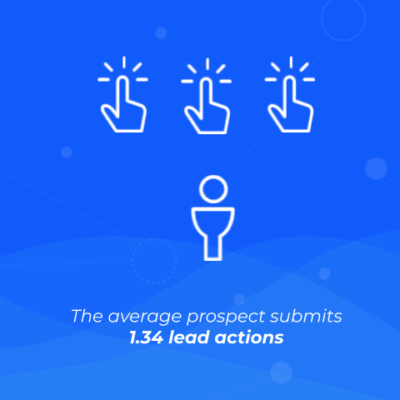
It’s a question we get all the time: Why is it that my analytics never match the actual opportunities my sales team has?
While we’ve discussed reasons why forecasting may be inaccurate, I’m zooming in on the gap between marketing reporting and sales results.
Closing this gap enables you to better predict sales while improving your ability to objectively evaluate marketing efforts. In a time when marketing budgets feel inflated and sales strategies are evolving for a low inventory market, it’s especially important to have clear, reliable numbers.
Why Does the Gap Exist?
Google Analytics and other advertising vendor dashboards typically report on lead actions - or total conversions - rather than unique prospects.

These “lead actions” (or conversions) could be phone calls, form fills, chat messages, or a number of other activities that count as a lead in each of your systems. The problem is one prospect can submit multiple lead actions. In fact, Foureyes data shows the average automotive dealership prospect submits 1.3 lead actions, which means your pipeline is likely inflated from the start. Especially during low inventory, you may have prospects submitting additional forms and taking more lead actions than before if their desired vehicle isn’t in stock.
Marketing reporting doesn’t always reflect sales intent.

From Foureyes data, we know that only 45.6% of automotive dealership-generated leads are qualified sales leads – i.e. they appear to have intent to buy. This means that the other 54.6% of leads are service requests, spam, bots, vendors, tests, or even actual leads, but without enough contact information for follow-up. These “junk” leads prevent your team from being able to accurately measure and evaluate performance. The challenge here is that many web analytic and vendor dashboards report on all leads without the ability to parse out those which are qualified.
How Does This Affect My Pipeline?
One word: inflated. The gap appears in the form of an inflated pipeline caused by accumulating total leads instead of just qualified sales prospects, which cascades skewed data into forecasting, projections, spending, and even staffing decisions.
Even when you try to manually bridge the gap by combining different reports in spreadsheets, you’re pulling data from different platforms which use different criteria and definitions for reporting on data with similarly-sounding names (e.g. lead vs prospect vs qualified prospect, lead actions vs conversions, etc.). Not to mention the hours burned on reconciling this work, and the inevitable errors that result from manual data stitching.
Closing the Gap
Start with clean data.
Web analytics and vendor dashboards obviously still have a place, but their data can and should be normalized so that you can start with a cleaner baseline. For example, you’ll likely want an accurate measurement of unique leads instead of lead actions. You may also want clearer, more detailed attribution among your lead sources – e.g. some CRMs will automatically mark all online leads as with a generic “web leads” source which limits your visibility into the true source. But wouldn’t it be nice if it more clearly delineated if that web lead was from a form vs chat, or paid Facebook campaign vs referral site?
Identify buying intent.
Arguably, the most important signal that sales and marketing should always be looking for in leads is buying intent. This means reviewing your own first-party data to see what pages your leads visit, how frequently they return to your site, etc., or acquiring third-party data from vendors who track and use a collection of various signals to identify user interests and behaviors as a proxy for sales intent. First-party data is always going to be more accurate, but also more challenging to collect, analyze, and act on at scale with in-house resources. More on this below.
Connect marketing campaigns to sales results.
This needs to be done at least once a month if you are doing it manually. But ideally, you have software that can do the job for you. I don’t recommend having one or more vendors do sales match backs for you, as you are likely to see reporting skewed in their favor or attributed multiple times to multiple vendors. Again, it can be done in-house but requires time and patience to complete accurately. The worse the accuracy, the less efficient your downstream decisions become.
We have a tool that can help.
As I said, the gap can be closed manually, but it requires time you probably don't have. But the good news is that there is a tool that can help.
Foureyes Omni-Tracking is a reporting tool that lets you see who is visiting your site, what specific page(s) they visit, and when they are visiting them. It connects your website traffic, website forms, chats, and phone calls with your CRM and inventory data.
Omni-Tracking acts as an objective third-party tool for reporting by showing you the source of the lead (e.g. Facebook) as well as the lead action they took to become a lead (form, chat, etc.). You get more accessible data and a remarkable level of insight into your performance. Improved visibility means better marketing decisions. You can read more about Omni-Tracking, how it works, and what you get. Or request a demo to get a personalized walk-through of Foureyes Omni-Tracking today.
